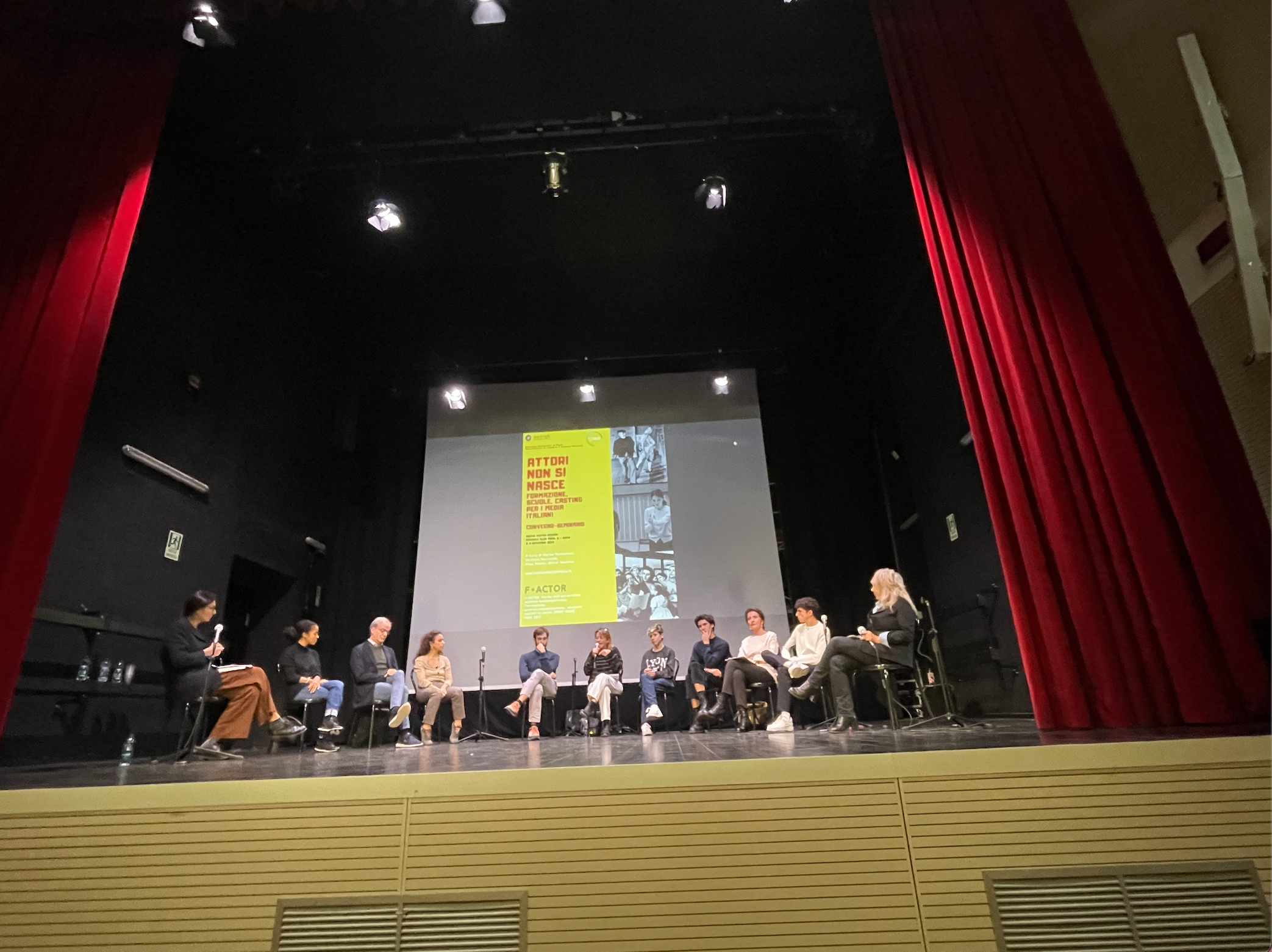
"Training" Round Table
Maps to the Schools (Attori non si nasce. Formazione, scuole, casting per i media italiani - November 2-3, 2023)
A cura di Alma Mileto.
The results of the mapping derive from the investigation carried out by the Roman unit of the project, in sinergy with the Turin one and specifically with Paola Zeni, following a questionnaire designed with Google Form sent to the Italian acting schools, in the film and theatrical fields, that we were able to find through online research. In particular, my task was to map the schools of central-southern Italy. The same list of questions was submitted to schools’ management.
During the course of our work, we realized that going into excessive detail, for example asking to list the teaching methods practiced in individual schools or forms of tutoring alongside the training course, would have been counterproductive in terms of the cost-effectiveness of the investigation. After several screenings we thus arrived at a number of 12 questions: name of the school, web address, physical address of the headquarters, year of foundation, MIUR or AFAM recognition, number of years expected per course, number of hours expected in a year, registration open or limited, maximum number of students per course, admission requirements, method of access to the course, cost of the fee per year of the course. In some cases, the questions were asked in open response mode to allow the interlocutor to be more discreet, in most cases they were instead dry answer or multiple-choice questions. In the communication to the schools, it was also specified that for those who did not have the time or opportunity to fill out the questionnaire themselves there would be the possibility of being contacted by telephone to fill it in together. In my experience this has happened in only three cases.
Reducing the number of questions meant being able to produce a map of the schools - the data collected in an Excel form from the Google form were connected to Google Maps so as to automatically create the map you see, of the entire peninsula and then for this occasion with one zoom on Rome - essentially based on markers of which it was possible to formulate a binary vision. For example, schools with limited enrollment are in yellow, those with open enrollment are in blue. Compared to questions with a higher discretion to which it is not possible to answer with yes or no, for example on the methods of access to the course, on the admission requirements or similar characteristics, Google provides, in a slightly less immediate way, the possibility to open a tab at the margin of the page with the qualitative information collected about a specific school.
It is certainly not a finished map but a “permanent observatory.” Although the questionnaire has been sent to almost all the schools mapped, we expect that more answers may arrive in the coming months (the territory is also changing, we could discover new schools in a few months just as we could no longer find some others). Without a doubt, the pandemic, as was underlined several times during the conference days in Turin, has marked and continues to mark in this sense a turning point in the course of Italian academic paths and consequently of our research.
As far as central-southern Italy is concerned, as it also appeared in the north, schools are concentrated in large cities. However, it is interesting to observe how in the province some small realities as workshops, associations, popular schools that have been rooted for years in the neighborhoods or small towns persist or, vice versa, how these marginal realities continue to rise, even in very recent times, to confirm and strengthen the need for creative and recreational practices even where it is more difficult to establish them. The objective of these centers is primarily community building, especially with adolescents and children: it is no coincidence that most of this type of schools focus on theater studies to which they integrate music and dance (often musical), activities that encourage the collective and performative presence of the youngest.
We left each other in Turin wondering if the schools would really answer our questions. Today we can affirm that those who responded to us (currently around fifty institutions, in several phases divided over the months) did so with enthusiasm, taking great care in detail, often adding information via email and, in the few cases of phone calls, extending their thanks for this operation and at the same time not hiding a certain satisfaction in finally being recognized and being able to tell their story to the outside world. Beyond the research’s scientific value, we are happy to be able to say that, as we hoped, we believe we have done a service first and foremost to otherwise unknown realities, as well as to the thousands of students who every year, and not only in the large city, wonders where they can sign up if they want to learn to act.
With regard to the location of the schools, the peak in attendance is recorded in the region of Lazio (Rome above all the other cities in Italy), with a less massive presence but which certainly presents a gap compared to the other regions in Campania and Puglia. The presence in Abruzzo is modest. To date, there are decidedly few institutions (at least those available through a Google search and a school website from which it was possible to obtain contacts) in Basilicata, Molise, Calabria, Sicily and Sardinia.
As regards the year of foundation, from the beginning of 2000 an increase can be seen which reaches consistency shortly before 2020 and then a decline for which it is easy to understand the reasons. On MIUR and AFAM accreditation there is a clear majority of “no” answers (68%) and only 6% of yes. This allows us to identify some possible categories (at least two, distinguishing schools in possession of recognition and schools that do not). However, many insisted, when asked to specify what other possible recognition could be mentioned, to specify recognition by the Region (the majority) or even recognition and financial support by individual associations in the organization of public events.
Most schools structure their academic path over a three-year period, few over a two-year period or over a period of four or more years. This is interesting because in some way, even without official recognition, the periodization emulates that of the three-year university course or equivalent qualifications (Conservatories or Art Academies). With regard to the hours per year we have rather discrepant peaks, ranging from 20 hours per year to 3.450, but an average between 200 and 500 hours per year (some divide them by week, someone by month, someone by semester, someone else even calibrates the hours ad personam, proposing a customizable time).
As we expected, the limited number is now the most popular (72% yes versus 27% no). The main requirement for admission is, even before being based on the presentation of qualifications and any performance, the chronological age. Almost all schools accept students only from the age of majority and above (or, another way of saying it, only if they have a high school diploma). On the other hand, there are those who have responded that the only criterion is the “good will” of the student, or several institutions who are keen to point out that they prefer someone who presents a totally immature predisposition to those who already have working experience.
Each class in almost all schools is made up of a maximum of 15-20 students (again with variations from 6 to 30, clearly depending on the size of the school). Regarding the methods of access, it is interesting to note that the canonical audition or oral interview continues to be the most popular, while the written and, above all, the photographic book which years ago was accused of being the first resource in which to invest in order to be taken into consideration by schools and agencies, has been almost abandoned in favor of the more modern self-tape. Many schools also organize opening internships in which often (even in the main ones such as Centro Sperimentale, Volonté or Silvio D’Amico in Rome) a higher number of students are skimmed off after a month, thus subjecting the students to a pre-selection mechanism.
Finally, annual fees are also decidedly variable, from 60 to 5000, with an average ranging from 500 to 1000 euros per year. These are the data, presented here briefly, collected to date. Working through Google questionnaires remotely is undoubtedly effective and precise, and has allowed us to come into contact with realities that would otherwise be difficult to reach. However, another thing is to experience “first-hand,” as much as this is possible while maintaining the position of external observer, the enormous work managed daily in each school. In recent months I have had the opportunity and fortune to closely follow some of the courses of the first-year students of the Gian Maria Volonté School of Cinematographic Arts. The experience of observing these guys up close meant first of all realizing how what matters most and makes things work is the harmony and empathy that is created within the groups of work.
These are young girls and boys, barely in their twenties, spending hours of their days in close contact - where close contact in this case means laughing, crying together, confiding their most hidden fears, showing themselves in their most hidden fragilities, exchanging clothes and exchanging skin, facing competitions and dodging them, recognizing ourselves in others, sometimes envying each other, almost always helping each other overcome moments of difficulty. Acting in front of someone means (I always believe when you are at this level) showing yourself for what you are, in your essence. The students immediately showed themselves to me too, because in a setting like this you can’t do otherwise. This is the strongest thing: there is no alternative to live contact and the sincerity of one's presence. In a world like ours where, in recent years more than ever, mediated relationships are king, these young guys, guided by exemplary figures, have shown me that being actresses and actors requires first of all breaking down barriers (physical and mental) between individuality and feeling like a single body. In preparation for the split into many ambitious units in a couple of years diving into the world of work, the school is also a bubble in which they can all prepare together, almost forgetting that we are distinct people, for what is to come.
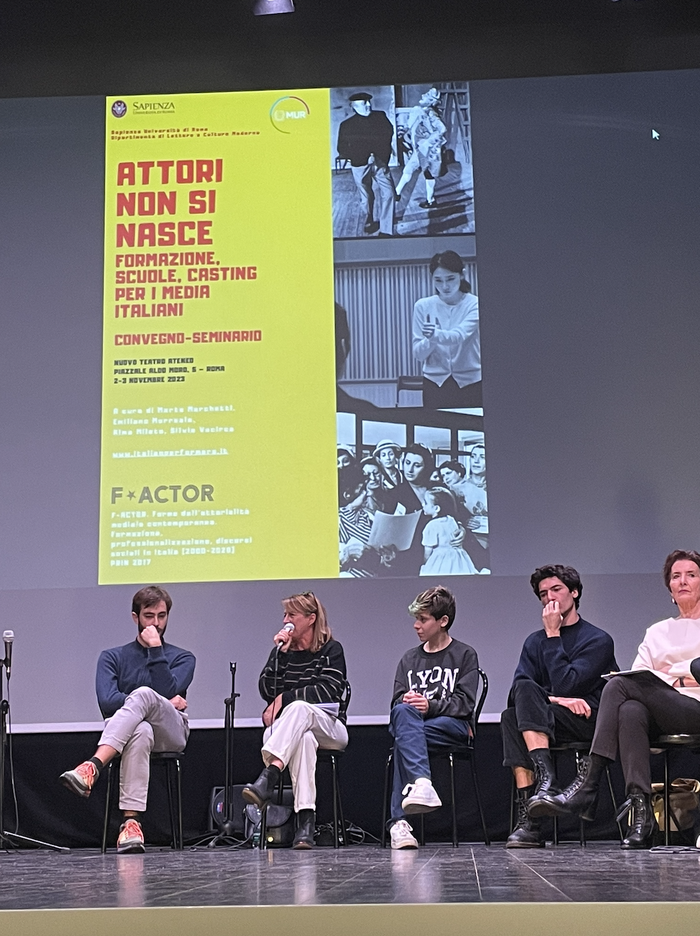
Round-Table 1 - Laura Muccino (Scuola d'arte cinematografica Gian Maria Volonté)

Round-Table 2 - Mirella Bordoni (CSC)
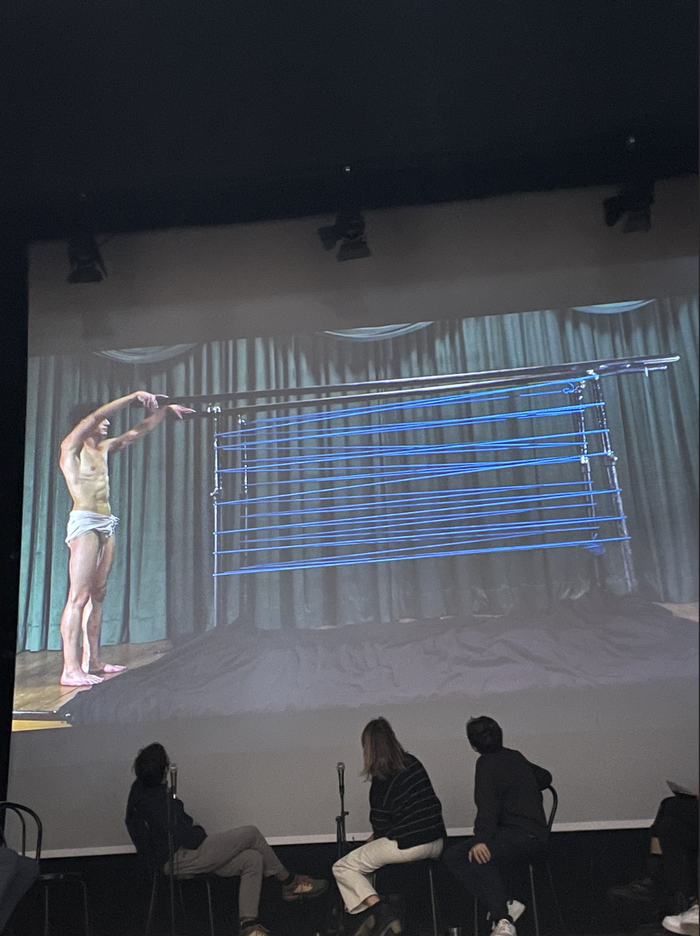
Round-Table 3 - CSC
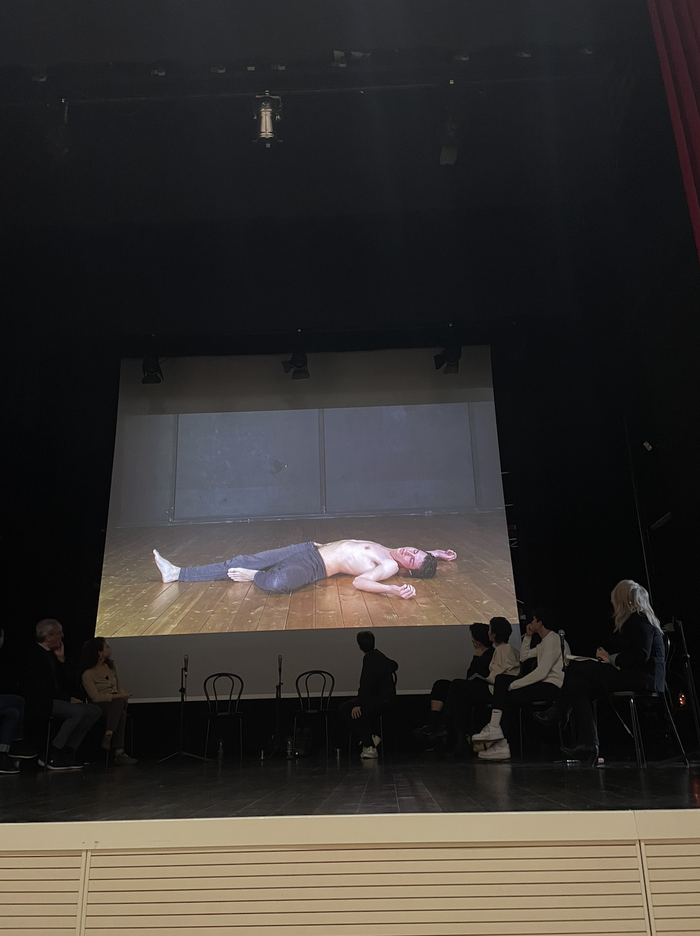
Round-Table 4 - CSC
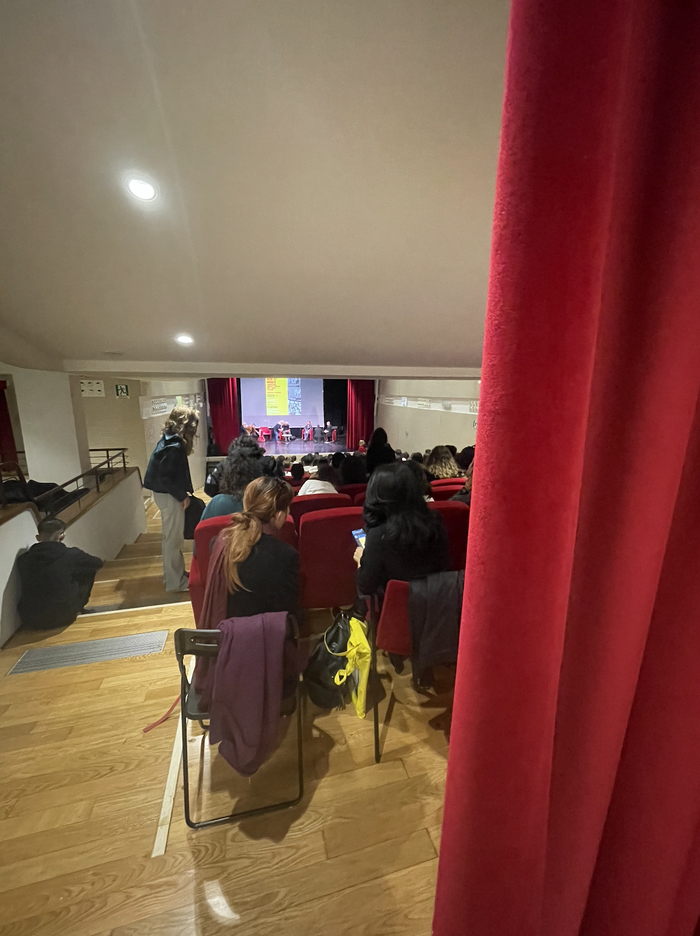
Nuovo Teatro Ateneo
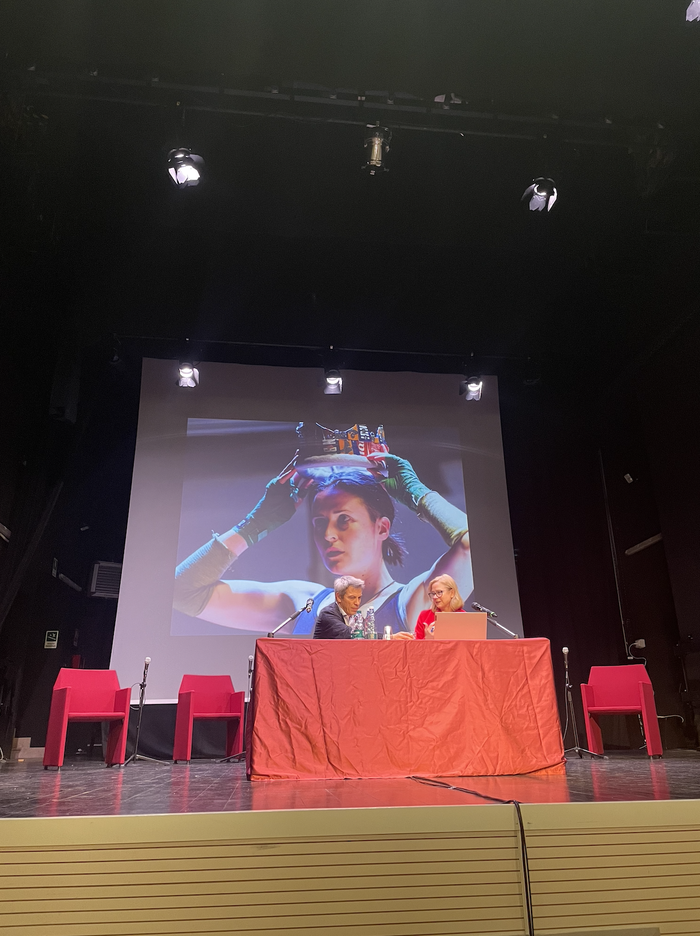
Amy Cook (Stony Brook University) - Keynote Speech
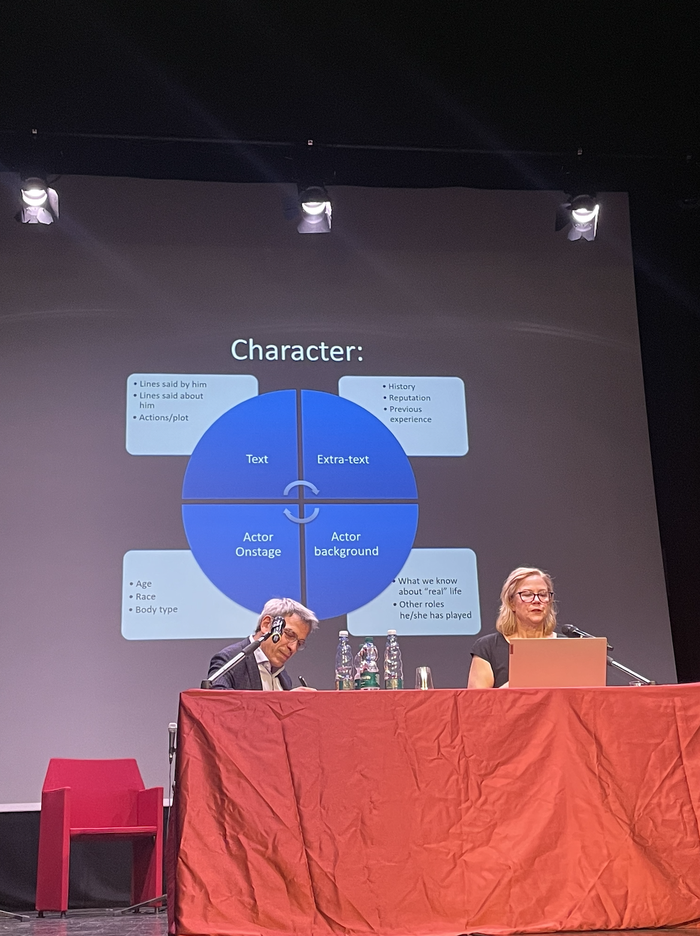
Francesco Pitassio (University of Udine) - P.I. FACTOR
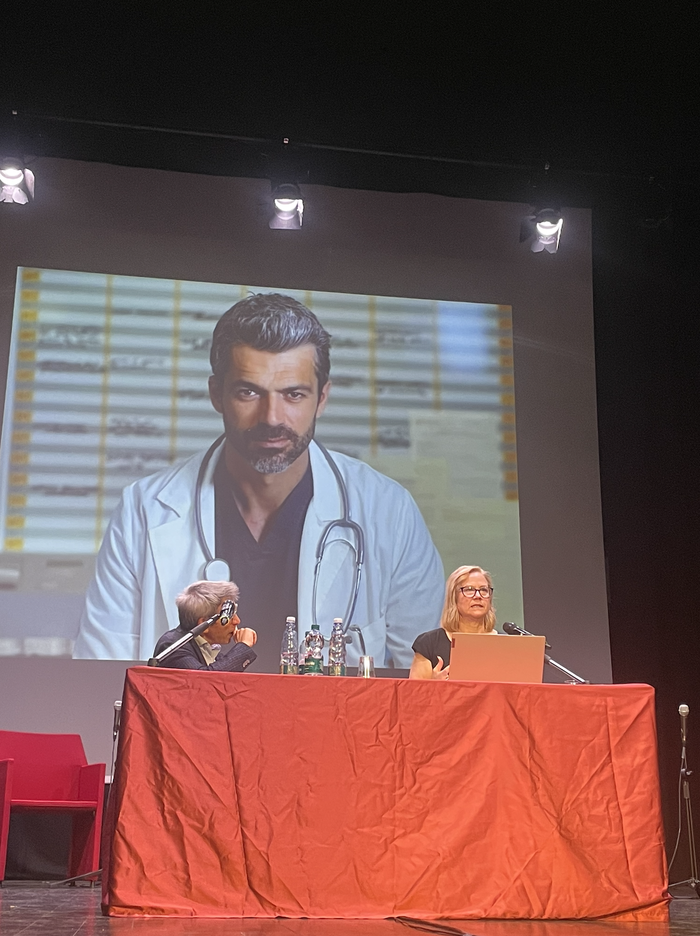
Amy Cook (Stony Brook University) - Keynote Speech
